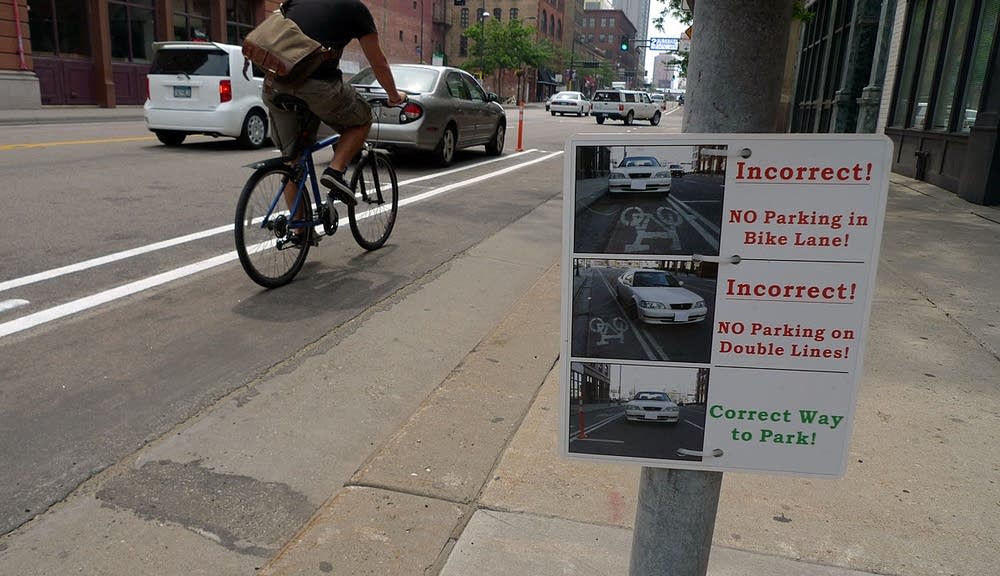
The most common scenario in collisions between motorists and bicyclists is a right turn by the driver who just passed the cyclist. Is it that the driver doesn’t see the bicyclist? Or doesn’t care?
Science has given us the answer, CityLab reports. Some participants in a study in Toronto didn’t look long enough to detect the conflict, others didn’t look at all.
Half of the people in the small study of experienced drivers didn’t look.
It was a given that people would fail,” said lead study author Birsen Donmez, “but we weren’t expecting that they would fail to this extent, especially for a low-risk age group.”
Some drivers checked their mirrors but not over their shoulders for approaching cyclists in that second turn with the parked cars. Two checked neither, and one in particular checked too late while turning. Most of the offending drivers, the researchers also found, frequently drove through downtown Toronto, indicating that they were likely familiar with the roads.
“It does show, potentially, an education training issue, but even if you are trained, your attention is limited as there are a lot of things to pay attention to at any given time,” Donmez said. Drivers turing right may be focusing more on vehicle traffic coming from the left. The study is limited by a small sample size and research scope, but in later studies, Donmez and her team hope to parse out the nuances by monitoring driver behavior before turning, targeting specific intersections that have seen several collisions, and by using lighter-weight eye-tracking devices.
The survey also found that half of pedestrians and drivers don’t know when cyclists have the right of way, and that bicyclists overestimate drivers’ awareness of their hand signals.
Toronto, which is experiencing an unusually high number of fatal accidents in the scenario, sounds much like the Twin Cities, where bicyclists and drivers point fingers at each other for not knowing the laws.
CityLab says the study also makes clear that “it largely falls upon the bicyclist to prepare for—and expect—the worst when crossing intersections. There’s an alarmingly good chance that the driver coming up on your left isn’t looking out for you.”
(h/t: Paul Tosto)
